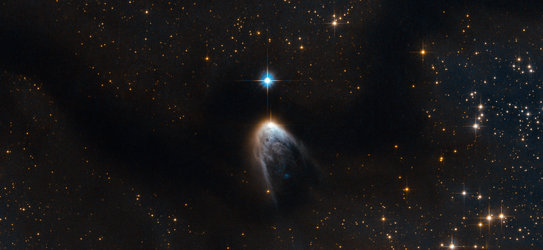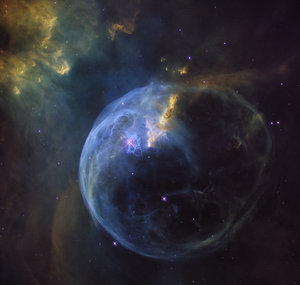Accept all cookies Accept only essential cookies See our Cookie Notice

About ESA
The European Space Agency (ESA) is Europe’s gateway to space. Its mission is to shape the development of Europe’s space capability and ensure that investment in space continues to deliver benefits to the citizens of Europe and the world.
Highlights
ESA - United space in Europe
This is ESA ESA facts Member States & Cooperating States Funding Director General Top management For Member State Delegations European vision European Space Policy ESA & EU Space Councils Responsibility & Sustainability Annual Report Calendar of meetings Corporate newsEstablishments & sites
ESA Headquarters ESA ESTEC ESA ESOC ESA ESRIN ESA EAC ESA ESAC Europe's Spaceport ESA ESEC ESA ECSAT Brussels Office Washington OfficeWorking with ESA
Business with ESA ESA Commercialisation Gateway Law at ESA Careers Cyber resilience at ESA IT at ESA Newsroom Partnerships Merchandising Licence Education Open Space Innovation Platform Integrity and Reporting Administrative Tribunal Health and SafetyMore about ESA
History ESA Historical Archives Exhibitions Publications Art & Culture ESA Merchandise Kids Diversity ESA Brand Centre ESA ChampionsSpace in Member States
Find out more about space activities in our 23 Member States, and understand how ESA works together with their national agencies, institutions and organisations.
Science & Exploration
Exploring our Solar System and unlocking the secrets of the Universe
Go to topicAstronauts
Missions
Juice Euclid Webb Solar Orbiter BepiColombo Gaia ExoMars Cheops Exoplanet missions More missionsActivities
International Space Station Orion service module Gateway Concordia Caves & Pangaea BenefitsSpace Safety
Protecting life and infrastructure on Earth and in orbit
Go to topicAsteroids
Asteroids and Planetary Defence Asteroid danger explained Flyeye telescope: asteroid detection Hera mission: asteroid deflection Near-Earth Object Coordination CentreSpace junk
About space debris Space debris by the numbers Space Environment Report In space refuelling, refurbishing and removingSafety from space
Clean Space ecodesign Zero Debris Technologies Space for Earth Supporting Sustainable DevelopmentLatest
Applications
Using space to benefit citizens and meet future challenges on Earth
Go to topicObserving the Earth
Observing the Earth Future EO Copernicus Meteorology Space for our climate Satellite missionsCommercialisation
ESA Commercialisation Gateway Open Space Innovation Platform Business Incubation ESA Space SolutionsEnabling & Support
Making space accessible and developing the technologies for the future
Go to topicBuilding missions
Space Engineering and Technology Test centre Laboratories Concurrent Design Facility Preparing for the future Shaping the Future Discovery and Preparation Advanced Concepts TeamSpace transportation
Space Transportation Ariane Vega Space Rider Future space transportation Boost! Europe's Spaceport Launches from Europe's Spaceport from 2012Latest

Dying star offers glimpse of our Sun’s future
Thank you for liking
You have already liked this page, you can only like it once!
This is a final act of celestial beauty before the long fade into cosmic history. Invisibly buried in the centre of this colourful swirl of gas is a dying star, roughly the same mass as the Sun.
As a star ages, the nuclear reactions that keep it shining begin to falter. This uncertain energy generation causes the stars to pulsate in an irregular way, casting off its outer layers into space.
As the star sheds these outer gases, the super-hot core is revealed. It gives off huge quantities of ultraviolet light, and this radiation causes the gas shells to glow, creating the fragile beauty of the nebula.
This example is known as Kohoutek 4-55. Named after its discoverer, the Czech astronomer Luboš Kohoutec, it is located 4600 light years from Earth, in the direction of the constellation Cygnus.
This image was the final ‘pretty picture’ taken by the Hubble Space Telescope’s Wide Field Planetary Camera 2 (WFPC2). The camera was installed in 1993 and worked until 2009, offering a 16-year stretch of unparalleled observations.
WFPC2 took many of Hubble’s iconic images. They helped to make the space telescope a household name across the world.
This particular shot is a composite of three images, each taken at a specific wavelength to isolate the light coming from particular atoms of gas. The different wavelengths have been colour-coded to aid recognition.
Red signifies nitrogen gas, green shows hydrogen and blue represents oxygen. The whole sequence was captured in 2 hours on 4 May 2009.
The intricate swirls of gas offer us a glimpse of our Sun’s distant future. In 5 billion years’ time, our star will be dying. It is expected to behave in the same way as see here, shedding its outer layers to reveal the burning core, which then becomes a slowly cooling ember known as a white dwarf.
By that time, Earth will be long gone, burnt to a crisp as the Sun dies. But the beauty of our star’s passing will shine across the Universe.
This image was first published on the Hubble Space Telescope website on 10 May 2009.
-
CREDIT
NASA, ESA and the Hubble Heritage Team (STScI/AURA). Acknowledgment: R. Sahai and J. Trauger (Jet Propulsion Laboratory) -
LICENCE
ESA Standard Licence

Young star offers a glimpse of the Sun’s past

A golden veil cloaks a newborn star

Hubble views a cosmic oyster and pearl in NGC 1501

Hubble, bubble, some toil but no trouble















 Germany
Germany
 Austria
Austria
 Belgium
Belgium
 Denmark
Denmark
 Spain
Spain
 Estonia
Estonia
 Finland
Finland
 France
France
 Greece
Greece
 Hungary
Hungary
 Ireland
Ireland
 Italy
Italy
 Luxembourg
Luxembourg
 Norway
Norway
 The Netherlands
The Netherlands
 Poland
Poland
 Portugal
Portugal
 Czechia
Czechia
 Romania
Romania
 United Kingdom
United Kingdom
 Slovenia
Slovenia
 Sweden
Sweden
 Switzerland
Switzerland
























